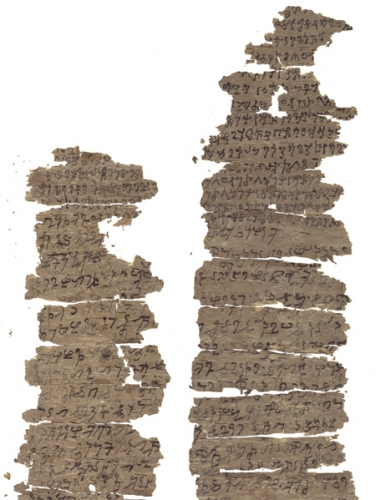FOR NEARLY TWO THOUSAND YEARS, these brittle birch bark scrolls and others like them sat in clay pots in Afghanistan. In the mid-1990s, smuggled out from under the nose of the Taliban, they made their way onto the European antiquities market and eventually into the care of wide-eyed Western scholars. Their excitement was well-founded: recent carbon dating tells us that these are the oldest Buddhist texts ever discovered, the earliest of them dating to 130 C.E. Written in the ancient Kharoshthi script, they are remnants of Gandhara, a kingdom that covered parts of modern-day Pakistan and Afghanistan and where Buddhism flourished from the first through fifth centuries C.E. The texts contain a variety of works, from sutras known in other languages to never-before-seen fables. Indicated below are lines thirteen and fourteen of a Dhammapada-like text, a verse also found in the Sutta Nipata of the Pali Canon and translated here from the Pali by Thanissaro Bhikkhu.
The monk in whom there’s nothing born of desire
that would keep him bound to becoming,
sloughs off the near shore & far—
as a snake, its decrepit old skin.
